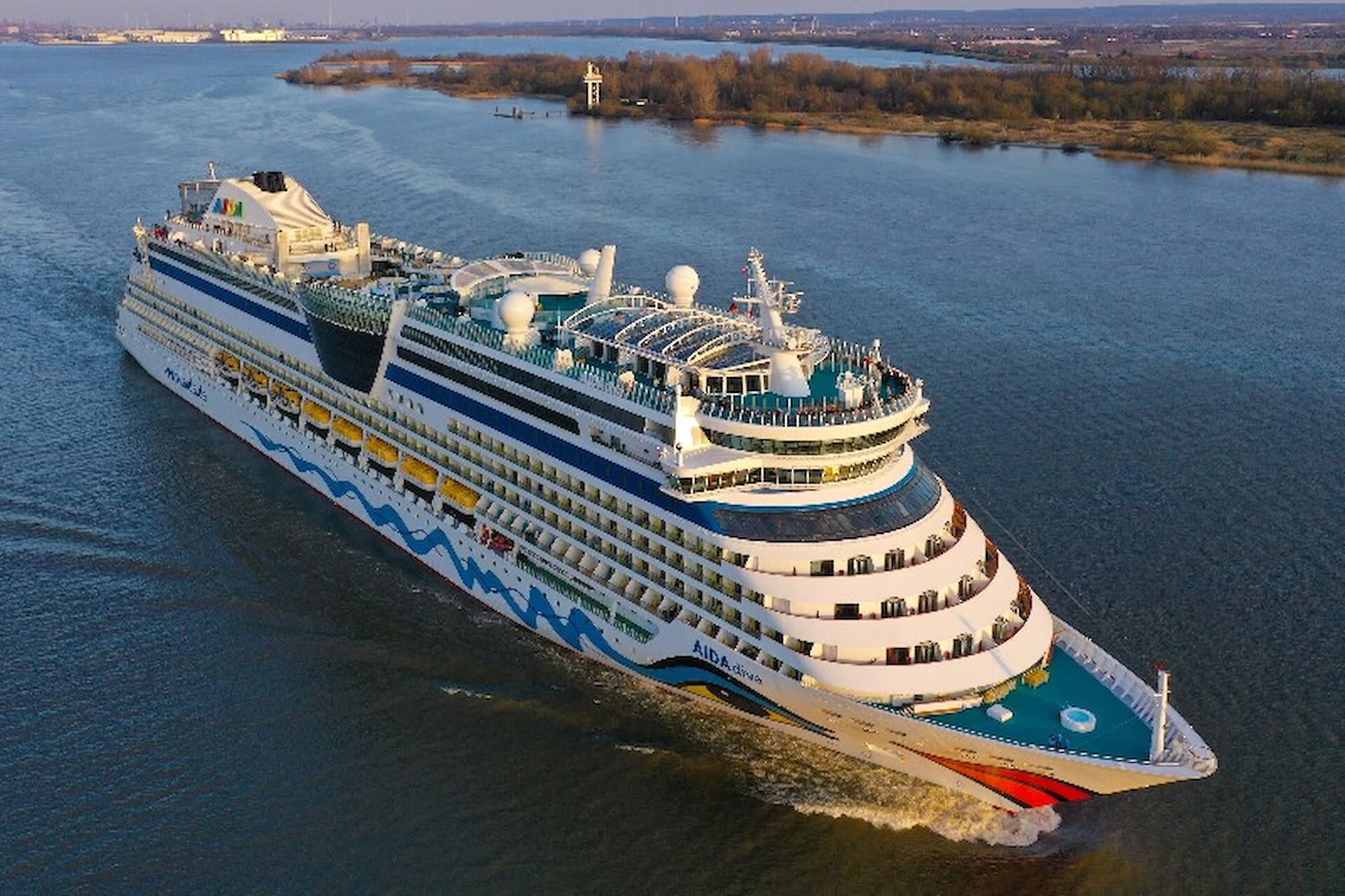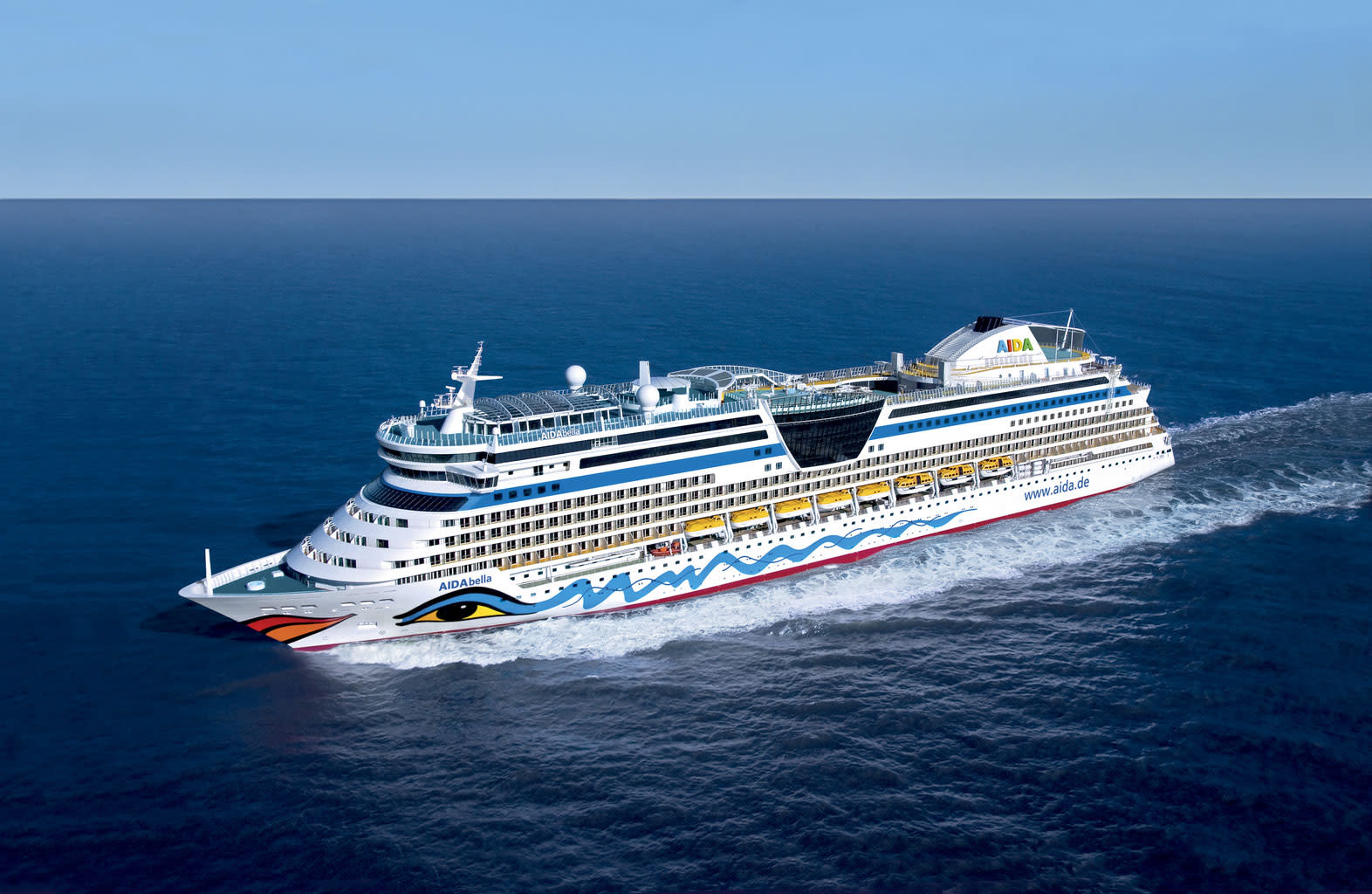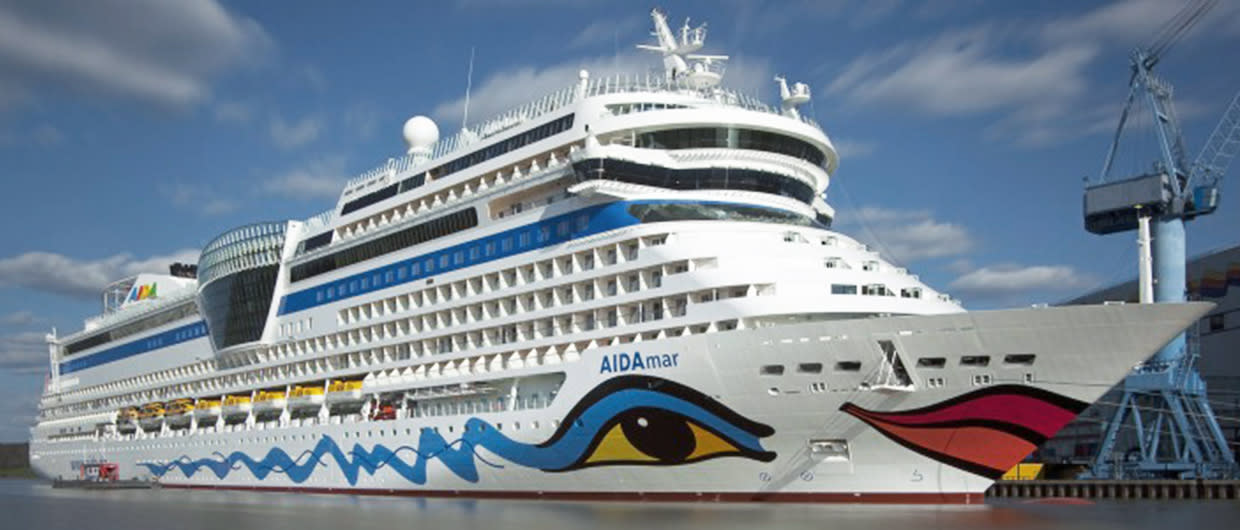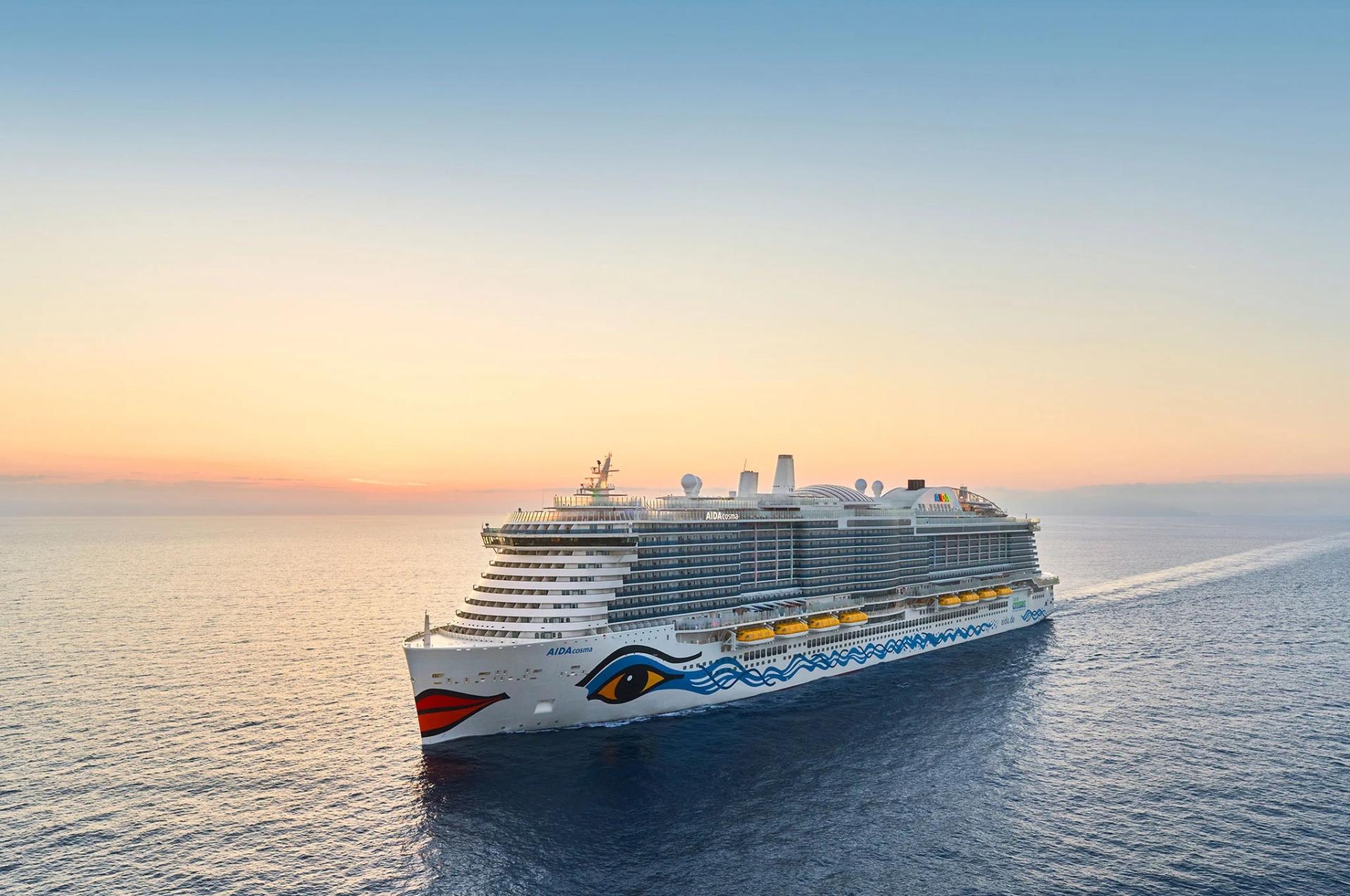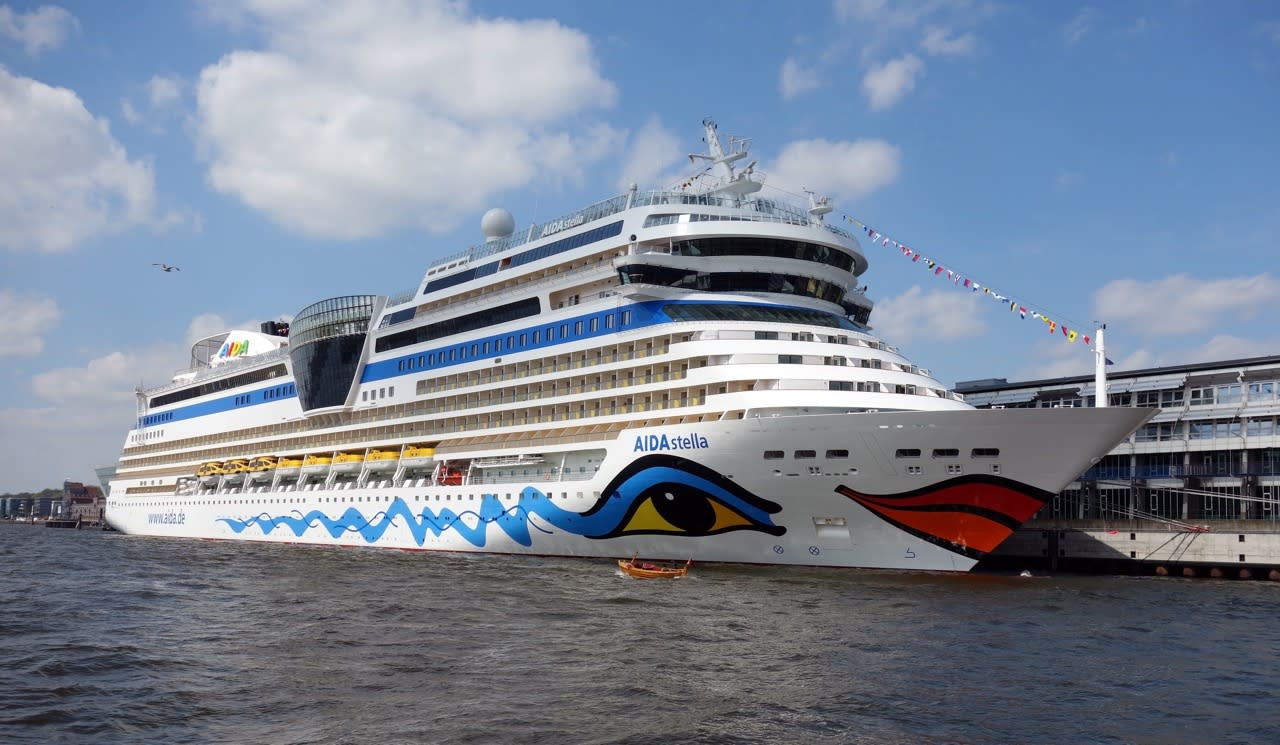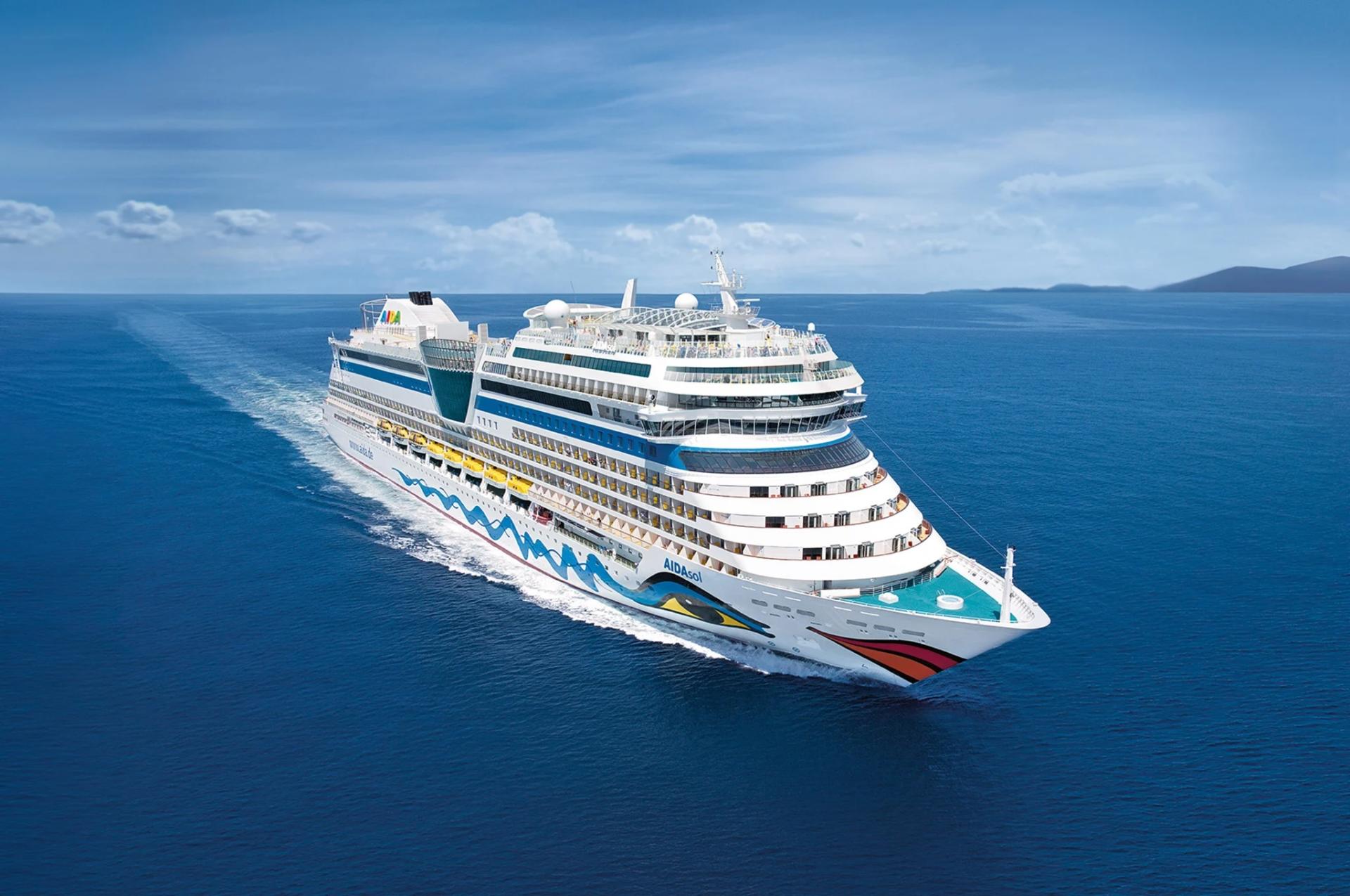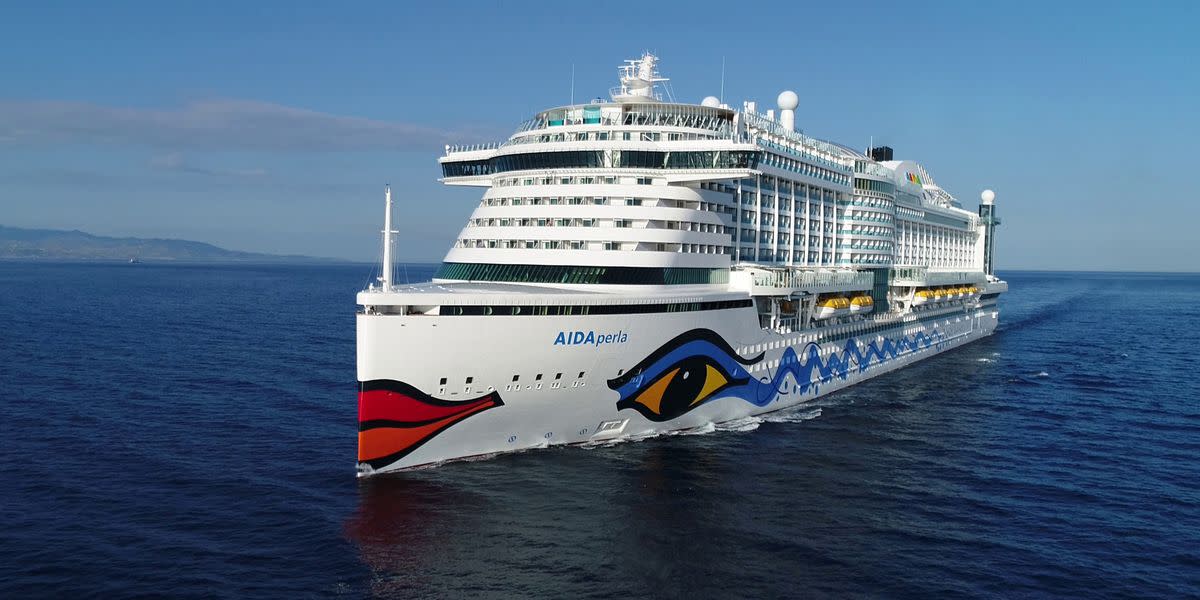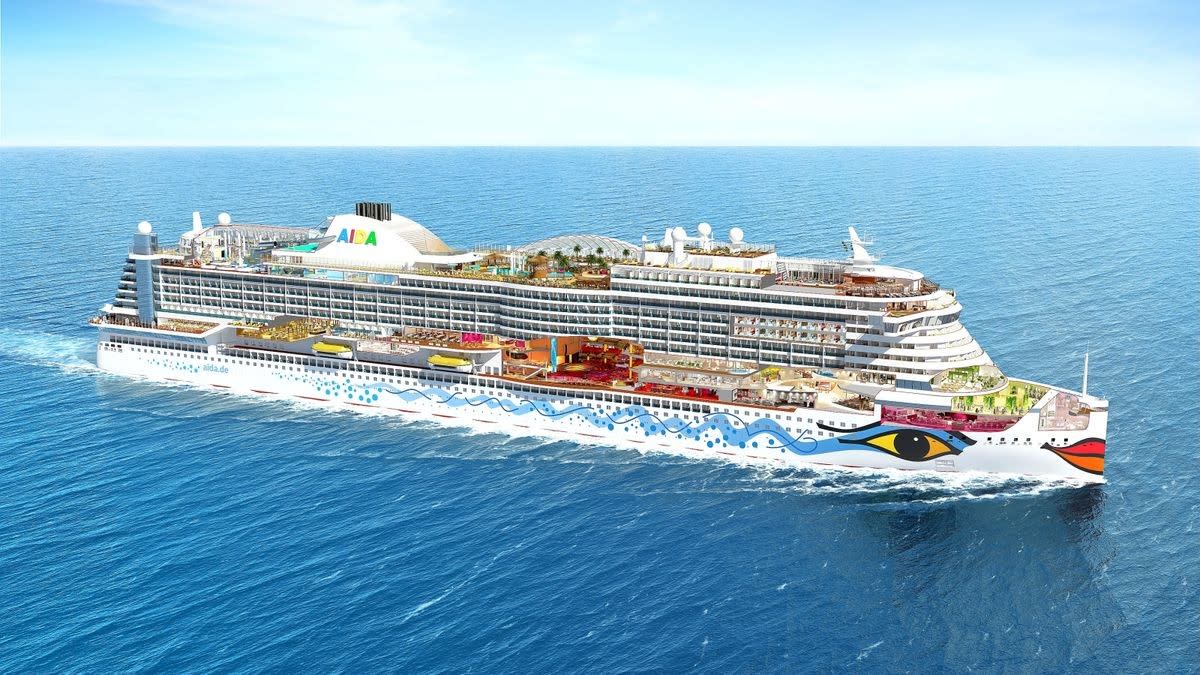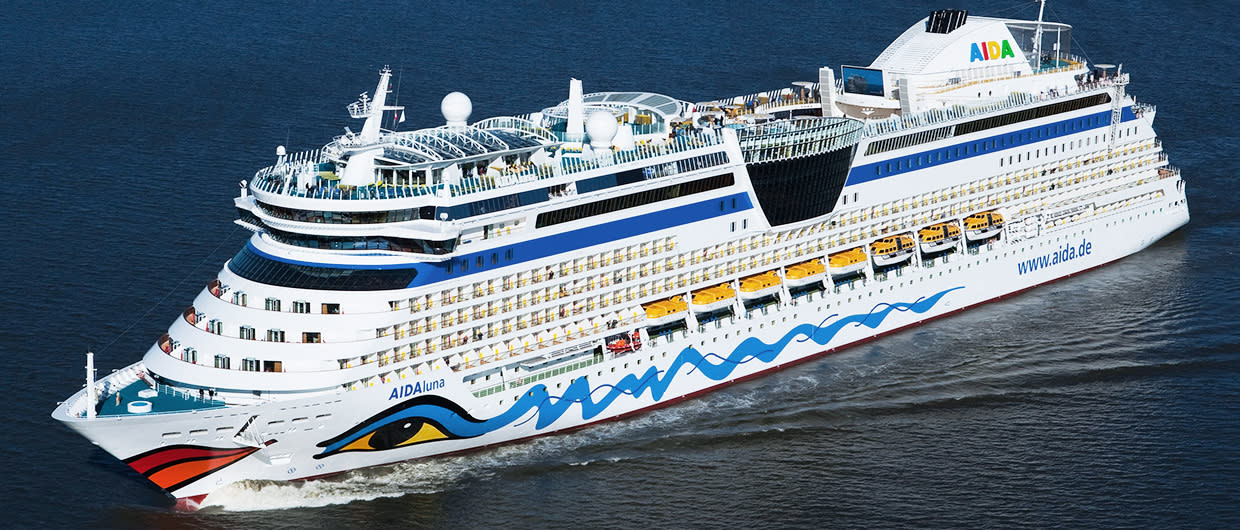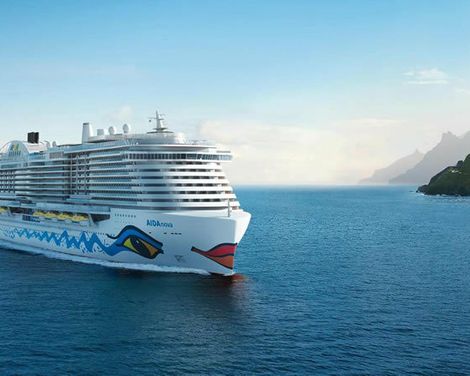Table of contents
AIDAdiva Revisited: How One Ship Changed the Future of AIDA Cruises
In 2007, the fleet entered a new phase. A new chapter began with the AIDAdiva - not just technically, but conceptually. It was the first ship in the Sphinx class, larger, more open, and bolder than anything before it. No longer just a cruise. It redefined what cruising could feel like. An open stage instead of a traditional curtain. A lounge instead of a theater. A promenade instead of a gangway.
Top Deals from AIDA Cruises & Co.
The architecture set the tone. For the first time, a design concept ran from bow to stern. Open spaces, a central theatrium, clearly structured restaurants - nothing was left to chance. Colors became a stylistic device. Spaces became an experience. Those who had previously only known the classic AIDA layout experienced a change here. And for many: a new beginning.
Part of this is still in effect today. The Theatrium concept has been further developed in all subsequent generations. Life on board, which flows seamlessly between the stage, bar, and bistro, also harks back to the Diva. Other things, however, seem out of date. The interactive boarding map on the screen. The decoration with illuminated columns. The focus on events rather than individuality.
Nevertheless, the AIDAdiva remains the ship that ushered in an era. Without it, there would have been no blu, no mar, no nova. Anyone who boards her today senses the upheaval - not as a memory, but as a concept that endures to this day. Only calmer. And clearer.
Design with Direction: What AIDAdiva Tells Us About the Brand’s Vision
The AIDAdiva was never just a ship; it was an idea cast in steel. Interiors that not only functioned, but told a story. Color schemes that aimed to inspire, not just decorate. Concepts that were intended to turn everyday life into an experience. New then, today groundbreaking for everything that came after.
Anyone who remembers the first AIDA ships will immediately notice the difference. The Diva has edges, corners, visual stimuli. Carpet patterns that catch the eye. Walls that tell a story. Some might call it exaggerated. Others recognize precisely this as the desire for staging. The zeitgeist was palpable - in the mid-2000s, that meant an experience on every deck. And that's exactly what the AIDAdiva offered.
This approach became a standard. Five other Sphinx ships followed its layout. Theatrium in the center, restaurants along the flanks, cabins clearly arranged. Stylistically, it also set the tone. Warm lighting, open bars, short distances. The feeling of being on the move yet at home. Anyone sailing on the mar, sol, or blu today is also, in spirit, sailing on the Diva.
Technically, it was also a transition. The first interactive screens on board. The TV information system with daily schedules, weather, and route data. No app yet, no mobile network yet - but a clear sign: The ship thinks for itself. It communicates without being intrusive. What is taken for granted today was hinted at here for the first time.
Space and Flow on Board: How AIDAdiva’s Layout Impacts Life at Sea
The AIDAdiva created spaces that were more than just functional. The Theatrium was the centerpiece - open, flooded with light, without a curtain. A stage, a bar, a meeting place. There was no separation between show and everyday life. Those who pass by become spectators. Those who stay become part of the scene. This concept was new - and still shapes life on board many AIDA ships today.
But not every space seemed equally well thought out. The public areas were spacious, but sometimes unevenly distributed. The open decks offer plenty of space for loungers and panoramic views - but in between: narrow paths, narrow corridors, short intersections. On days at sea, there is movement, sometimes even crowds. Especially in the transition areas between the pool deck, buffet restaurant, and stairwell, it becomes clear: The Diva has charm, but lacks a consistent flow.
What is striking: The ratio of cabins to public space was a balancing act. Around 1,025 cabins, but comparatively compact interior space. This ensures tranquility in the outdoor areas, but also creates bottlenecks at peak occupancy. The balance was just right in terms of numbers - it felt like learning where things worked and where things slowed down.
The AIDAdiva was an attempt to rethink space. Open, approachable, different. Not every decision seems ideal today. But many fleet-wide standards were pioneered here first.
Unpretentious Dining: How AIDAdiva Gets Cruise Cuisine Right
On the AIDAdiva, dining wasn't a spectacle. It was structure. Three buffet restaurants - Market Restaurant, Wide World, and Bella Vista - focused on clarity early on. No themed islands with a selfie factor, but lines with meaning. Meat, fish, vegetarian. Regional, classic, light. No oversupply, no conceptual confusion. Guests found what they were looking for. And left full and satisfied - not overwhelmed.
The Rossini was more than a specialty restaurant. It was a statement. Fine dining without a tie, but with a sense of sophistication. A reduced menu, fine plates, a tranquil atmosphere. Those who ate here knew: This isn't for a quick bite. It's for evenings that will linger. To this day, the Rossini on the Diva is considered a benchmark - not loud, but groundbreaking.
It was also exciting to see how the understanding of onboard dining changed. No longer: everything at once, everything for everyone. Instead: targeted offerings, clear transitions. Breakfast without crowds. Theme evenings without shows. No spectacles to fill you up, but a culinary rhythm that fits the day.
The AIDAdiva demonstrated early on that good food on board doesn't have to be surprising. It has to lead. Not every plate is meant to be an event. Sometimes it's enough if it fits - the moment, the route, the mood.
Leisure with emotion: How the AIDAdiva focuses on real entertainment
On the AIDAdiva, nothing pushes itself into the foreground. Not even the entertainment. No sensory overload, no constant playback. Instead: a daily rhythm that works. Music by the pool in the morning, a reading in the Theatrium in the afternoon, and an acrobatic act in the evening - quietly integrated, not loudly staged.
The Theatrium still anchors the heart of the ship. But not as a stage for shows with a forced effect, but as a place with soul. Musicians don't sit on podiums; they stand in the center of the action. Readers don't perform with a light show, but with content. Talk formats feel like conversations, not programs. Those who come by stay. Not because it was announced, but because it fits.
In the evening, the mood changes. No choreography, no countdown. The music becomes softer, the lights warmer, the tempo slows down. Some listen, others move on. No focus on effect, but on atmosphere. Entertainment without pressure.
The AIDAdiva recognized early on what many ships are looking for again today: entertainment that accompanies. Not animated. Not controlled. But leaves room for individual moments - and that's precisely what makes it effective.
State of Technology 2007: How the AIDAdiva Helped Shape Modern Cruises
When the AIDAdiva entered service in 2007, full digital connectivity wasn't yet a topic of discussion. Nevertheless, the ship set standards. The hydrodynamically optimized hull shape alone resulted in a noticeable reduction in fuel consumption. The engine operated efficiently, and the entire energy architecture was designed for sustainability within the limits of what was possible at the time.
AIDA was also ahead of its time in wastewater treatment. Even back then, a biological-mechanical system was in use that far exceeded the standards of the time. Fresh water was produced using modern reverse osmosis systems - independent of port facilities, which was particularly advantageous on long voyages to less developed regions.
Digital elements appeared in the cabins for the first time in the form of an interactive TV system. Onboard information, weather, route - all accessible via remote control. Internet access was possible, but still very limited and expensive. There was no app, and smartphones were not standard.
Nevertheless, many things worked surprisingly smoothly. The processes on board were clear, the technology was easy to maintain, and the systems were robust. Many solutions were analogue - but well thought out. And that's precisely the point: The AIDAdiva was no technological marvel, but a solid ship with a forward-looking foundation. What worked back then is often replaced by new systems today - but not always improved.
Signature Spots on the AIDAdiva: Recognizable Places
The AIDAdiva has places that have remained. Not because of their size or technology, but because of their atmosphere. The Theatrium is one of them. Three decks open to the sky, with a ring of lights and a glass roof. Not a show hall, but a place that connects the stage and everyday life. Those who sit here experience the program - or simply the space itself. Acoustics, lighting, architecture: rarely so harmoniously combined.
The pool deck seems almost plain compared to newer ships. And that's exactly what makes the difference. No LED walls, no action areas. Instead, classic sunbathing spots, clear paths, a real view of the sea. Even at full capacity, there's still space. And peace.
At the very back: the Ocean Bar. A first at the time. An outdoor bar that's not just there, but functional. Wind-protected, open, with a view of the wake. In the evening at sunset, this is one of the quiet highlights of the cruise. No show, no music. Just a drink, the sea, and the moment. Those who know this will associate these exact places with the Diva. And with a type of cruise that no longer needs to be loud to make an impression.
Beyond the Caribbean: Where AIDAdiva Truly Shines
Many people know the AIDAdiva from the Caribbean. Barbados, Guadeloupe, St. Lucia - classics of the winter months. The Diva fits there because it's understated. Not a ship that overshadows the destination, but one that carries it. Shallow drafts, good maneuverability, and well-rehearsed tendering procedures. This makes even smaller ports possible - and ensures less stress on board.
In the off-season, it shows a different face. Northern Europe, the Baltic Sea, Norway in spring or fall. Where others focus on entertainment, the Diva brings structure. Weather-independent decks, a restrained program, many interior spaces with open views. No competition with rain or wind, but a great complement. Those seeking peace and quiet will find it here - even in Nordic waves.
She also plays to her strengths on transatlantic voyages. Clear processes, well-timed sea days, no overloaded entertainment concept. Instead of a continuous program: space for routines, readings, music. Especially on longer journeys, the Diva doesn't seem empty, but rather decelerated. Because everything has its place. And because she doesn't pretend to be more than she is - a ship for travel, not for show.
AIDAdiva vs. AIDAbella - Two Launches, Two Vibes
Technically, the two ships are similar. Construction, dimensions, number of cabins - almost identical. And yet, the difference is noticeable as soon as you step on board. AIDAdiva arrived in 2007 as the first of the Sphinx class. AIDAbella followed in 2008, with minor adjustments. Colors, materials, lighting - not spectacularly changed, but deliberately adapted. This shapes the atmosphere. And perception.
AIDAdiva seems more vibrant. More colors, more contrasts, more playful details. Often more attractive for families, a good entry point for couples with a sense of adventure. AIDAbella, on the other hand, is calmer, warmer, and somewhat more structured. It attracts travelers who are less searching and prefer to find. It is particularly popular with repeat customers - because it feels more familiar.
The differences lie in the everyday. Routes, volume, lighting mood. Not a show effect, but constant companionship. If you look closely, you'll quickly notice: Both ships function - but differently.
| Feature | AIDAdiva | AIDAbella |
|---|---|---|
| Year of Construction | 2007 | 2008 |
| Length/Width | approx. 252 m / approx. 32 m | approx. 252 m / approx. 32 m |
| Passengers | approx. 2050 | approx. 2050 |
| Design Style | more colorful, somewhat playful | warmer, more structured |
| Atmosphere | lively, familiar | calm, mature |
| Typical Guests | families, couples with a thirst for discovery | couples, solo travelers, experienced cruisers |
| Onboard Appearance | more open, but sometimes louder | more closed, but clearer |
| Show/Leisure Level | slightly elevated, more playful | reserved, suitable for everyday use |
Who the AIDAdiva is the right ship for today
AIDAdiva isn't for everyone. And that's its strength. Those who embrace it will get a ship with a clear focus. Open, but not cluttered. Classic, but not old-fashioned. This mix is particularly suited to guests who are curious - about routes, procedures, and the AIDA style itself.
The Diva is ideal for explorers. People who like to travel on their own. Who want to know how a ship works - without all-encompassing digital entertainment. Who prefer to discover real corners rather than staged highlights. The structured layout helps. The daily routine flows smoothly. And the atmosphere remains down-to-earth.
Families also find the conditions ideal. The kids' clubs are there, the program is age-appropriate. Not a lot of hustle and bustle, but enough to get involved. The routes are short, the offerings manageable - which is a particular advantage when traveling with smaller children. Not a constant entertainment concept, but a daily routine that works.
For AIDA newcomers, the Diva offers a good start. Because it showcases much of what defines the brand. Without overwhelm. Without technical gimmicks. Anyone who wants to get to know the AIDA world will get an honest version here - close to its roots, but with enough comfort.
Technology fans will benefit less. Those who rely on app control, smart cabins, and interactive touchpoints will experience limitations on board. Guests with high entertainment standards who are looking for large-scale shows and event formats are also better off choosing newer ships.
That’s exactly why AIDAdiva has found its place - and why it keeps it. It's not a stage. It's an offer. And those who accept it will experience a cruise as it was originally intended: clear, reliable, and human.
The Underestimated Charm of the Everyday - Why AIDAdiva Wants Less and Achieves More
AIDAdiva has never tried to be the most striking ship in the fleet. No spectacular exterior, no themed worlds with a bang. Instead: a system that supports. Structures that function. And spaces that don't put on a show, but simply exist.
That's precisely what makes the difference. Atmosphere isn't created by stimuli, but by tranquility. Because everything is logically structured. Because you quickly get to know your way around. Because you're not constantly being guided, but always being picked up. The Theatrium is open, the buffet restaurant is clearly laid out, and the routes are short. Everyday life becomes quality here.
Many guests return again and again - not because of something new, but because of the familiarity. They know where they want to sit, how the evening schedule works, when the best moment for a conversation at the Ocean Bar is. This repetition isn't a step backward, but a decision. For relaxation. For structure. For experiences that don't have to be loud to be effective.
The real charm lies in the small moments. An evening with live music. A quiet day at sea on the deck. A quick glance over the railing as the ship slowly picks up speed. AIDAdiva doesn't want to reinvent everything. But it reminds us that cruising can be done without staging. And that's often what stays with us the longest.
Facts, Figures, Details - AIDAdiva at a Glance
| Category | Details |
|---|---|
| Year of Construction & Shipyard | 2007, Meyer Werft Papenburg |
| Length & Width | 252 meters long, 32.2 meters wide |
| Number of Decks | 13 decks for guests, plus technical and crew areas |
| Number of Cabins & Types | Around 1,025 cabins: inside cabins, ocean view, balcony, suites |
| Passenger Capacity | Approximately 2,050 guests at double occupancy |
| Crew size | Approx. 600 crew members |
| Special features during construction | First ship of the Sphinx class, introduction of the open theatrium |
| Technology at construction | Hydrodynamically optimized hull, modern wastewater treatment, heat recovery |
| Energy & Environment | No heavy fuel oil in port operations, early measures to increase efficiency |
| Digital equipment | TV information system, interactive screens, no consistent app system yet |
| Position in the fleet | First representative of the Sphinx class, still in active service today |
| Areas of operation | Caribbean, Mediterranean, Northern Europe, Transatlantic |
AIDAdiva marked the beginning of a new era at AIDA Cruises. Many technical standards and design decisions that seem commonplace today were implemented here for the first time. Compared to today's fleet, it appears more compact and structured, but by no means outdated. Their strengths lie not in the spectacle - but in the solid, functioning basis.
